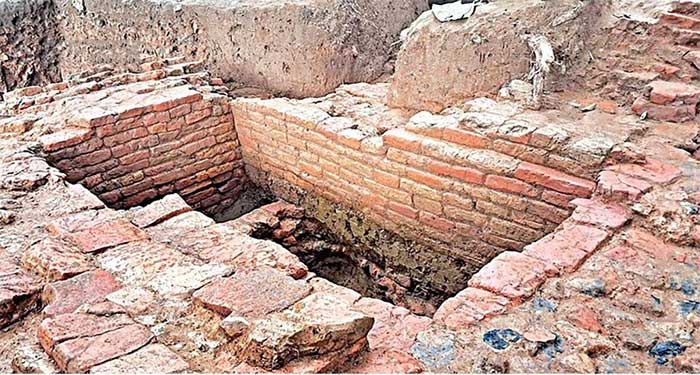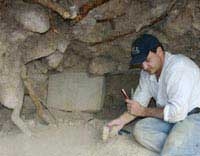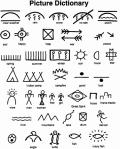Recently, a team of archaeologists from the Chattogram Archaeological Department, Sylhet, and Comilla in Bangladesh uncovered the remnants of an ancient settlement; believed to be the famous Buddhist university Pandit Vihar, located in the Biswamura area of Karnaphuli, Chattogram district.
According to reports from local media, the research team, consisting of 10 highly skilled archaeologists, began excavation on October 16.
A.K.M. Saifur Rahman, the director of the Chattogram Archaeological Department, stated: “The findings indicate that this area was inhabited from the 8th to the 12th century. The bricks found here are similar to those discovered at Mahasthangarh, one of the archaeological sites in Bangladesh, located in Shibganj, Bogura.”

Remnants of an ancient settlement believed to be the famous Buddhist university Pandit Vihar.
The excavation work is conducted daily from 8 AM to 2 PM, with the remaining time allocated for research. Senior officials from the Archaeological Department have provided guidance for the excavation process via video.
Pandit Vihar is one of the major learning centers of India. According to historians, this institution was established in the 8th century in the Karnaphuli region of Bara Uthan and Juldha. Many distinguished scholars – mostly Buddhist monks from the Pala Empire (750–1161), studied at this university. The reasons for the collapse of Pandit Vihar University are currently unclear.
Historians have confirmed that the situation of Pandit Vihar worsened during the Bengal Kingdom (1332–1539, 1554–76). Subsequently, due to conflicts between the Mughal Empire and Arakanese forces, the old port city of Chattogram, Deyang, and ultimately Pandit Vihar were completely destroyed.
The university remained buried until it was discovered by a man named Safar Ali around 1927, while he was digging foundations for a new house when a major landslide occurred. Sixty Buddha statues were found in the area, which are now displayed in various museums, including the British Museum and the Kolkata Museum. The Nandankanan Buddhist Monastery in Chattogram also houses some ancient sculptures excavated during this time.
Venerable Jinabodhi Bhikkhu, a professor teaching Pāli language at the University of Chittagong, who has conducted extensive research on this topic, stated: “The artifacts are preserved in various museums across the country, all of which were found in the Deyang hills in Anwara Upazila of Chattogram many years ago.”
“The stupa is also rich with many invaluable artifacts from the Pala dynasty.” Venerable Jinabodhi also referenced a text discussing Buddhist artifacts of Bangladesh from the 4th to the 12th century published by the Bangladesh Asian Society in 1999.
Venerable Jinabodhi has also written to Prime Minister Sheikh Hasina Wazed of Bangladesh, emphasizing the necessity of archaeological excavations. Later, he traveled to China with Sheikh Hasina in 2010 and expressed hopes to rebuild a “International Pandit Vihar University” during meetings with Chinese leaders. Upon returning, Sheikh Hasina granted permission for the university’s construction.
In 2012, a team from the University Grants Commission visited the ruins of Pandit Vihar and submitted a report supporting the establishment of a new university. Subsequently, domestic and international inspection teams visited the site to implement the construction of Pandit Vihar University and establish museums. However, the project has faced numerous issues and delays. Although plans were made to re-establish the facility on 60 hectares of hilly land with funding from China, Japan, Sri Lanka, and Thailand, excavation work has yet to commence.
Faruk Chowdhury, Chairman of the Karnaphuli Upazila Council, stated: “We are fully supporting and assisting them after learning about the rich history of this old site.” Meanwhile, the archaeological team is preparing a comprehensive report based on their findings. Venerable Jinabodhi noted: “The structure of the temple can be clearly identified if this area is excavated and thoroughly studied.”





















































